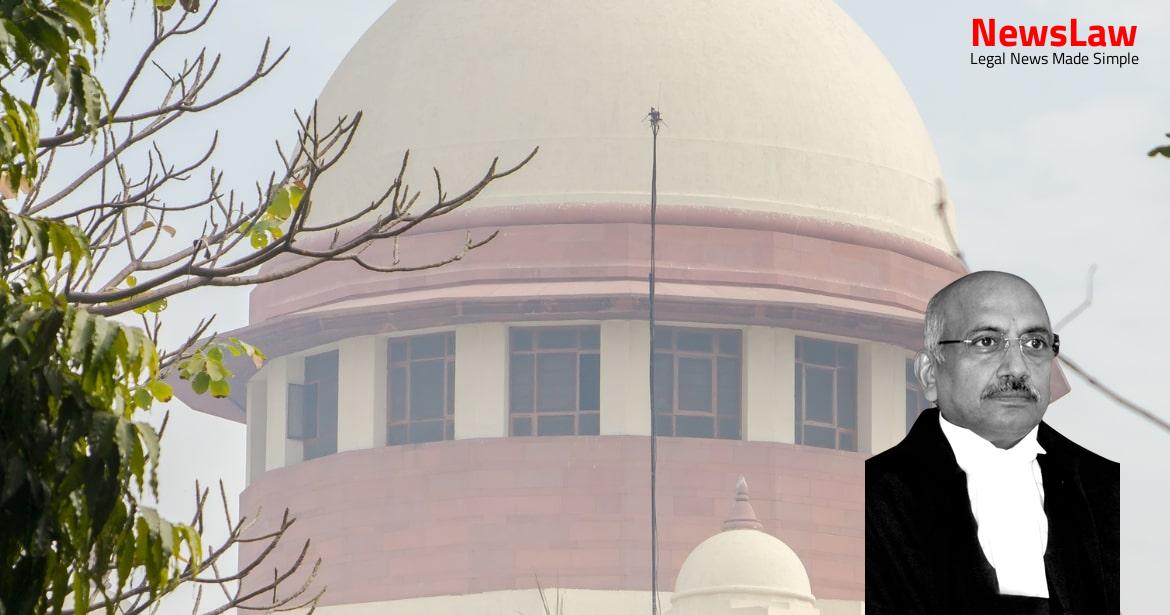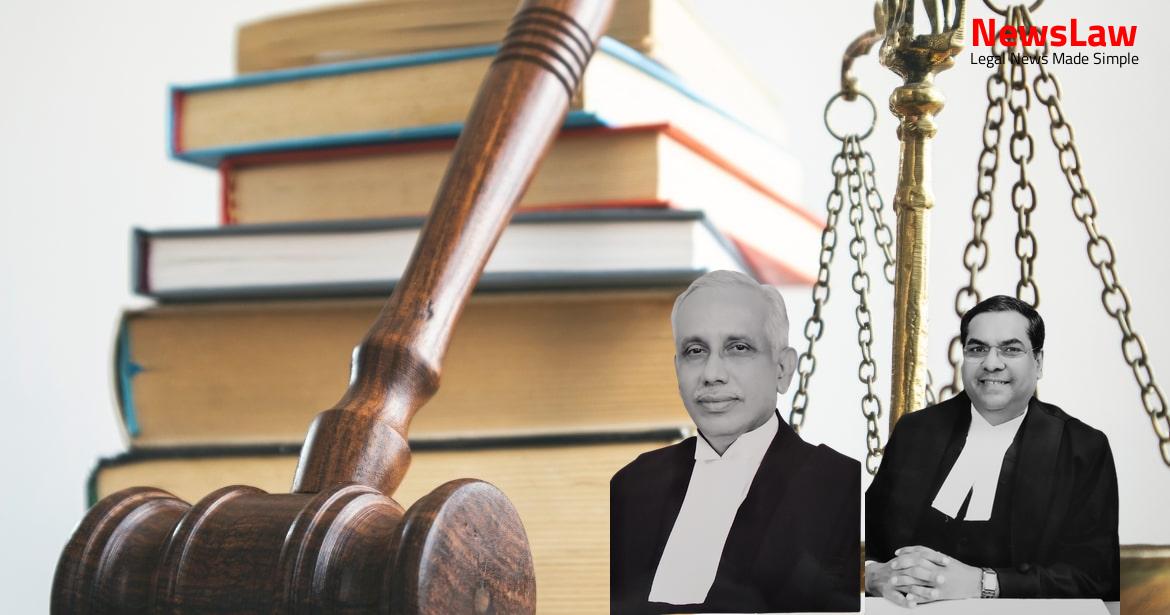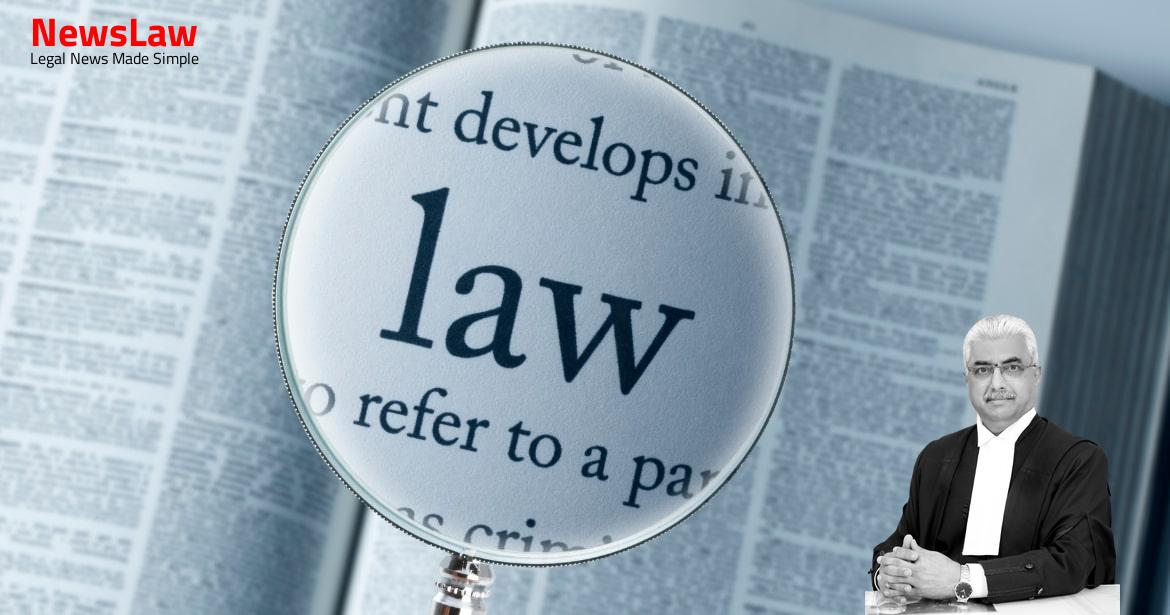The High Court’s in-depth analysis of Section 37 of the Architects Act 1972 sheds light on the legal intricacies surrounding the use of the title ‘Architect’ and the practice of architecture by unregistered individuals. This case delves into the legislative intent behind the Act, emphasizing the need to strike a balance between regulating the profession and allowing qualified individuals to engage in architectural activities. The Court’s interpretation holds significance in clarifying the boundaries of who can use the title ‘Architect’ and the extent of restrictions on unregistered practitioners.
Facts
- The High Court of Allahabad observed that Regulation 16 of the Service Regulations 1981 empowered NOIDA to set the conditions and qualifications for promotions in its departments.
- NOIDA established these conditions and qualifications in the Promotion Policy 2005.
- A query was raised by NOIDA to the state government regarding the same matter.
- High Court noted that the Architects Act requirements cannot be applied to the Promotion Policy 2005 as it is under state legislation.
- Council of Architecture challenged the High Court’s decision on Section 37 of Architects Act regarding practice of architecture.
- High Court allowed NOIDA to continue using the titles Associate Town Planner and Associate Architect.
- The High Court ruled that the Promotion Policy 2005 did not violate Sections 14 and 37 of the Architects Act.
- High Court interpreted Section 37 as prohibiting unregistered individuals only from using the title ‘architect’.
- High Court determined that the Promotion Policy 2005 did not violate Section 37 as it allowed non-architects to work as Associate Architects.
- High Court stated that the post nomenclature itself does not violate the Architects Act 1971.
Also Read: Legal Analysis on Arbitration Petition Limitation Period
Issue
- The issue before the Court is the interpretation of Section 37 of the Architects Act 1972
- The central question is whether Section 37 prohibits only the use of the title ‘Architect’ or practice of architecture by unregistered individuals
- The two possible interpretations are: 1. Prohibition of using the title ‘Architect’ only, 2. Prohibition of practicing architecture and related activities by unregistered individuals
Also Read: Analysis of High Courts’ Jurisdiction and Court Orders Under Article 142
Arguments
- Architects Act aims to ensure only qualified architects provide architectural services for construction in India.
- The Act regulates qualifications, registration, and disciplinary aspects of architecture.
- Section 37 prohibits unqualified individuals from practicing architecture, not just using the title ‘Architect’.
- High Court’s narrow interpretation of Section 37 risks allowing unqualified individuals to practice architecture.
- Union of India argues that the Act protects the title of architects, not exclusive rights over designing, supervising, and constructing buildings.
- The Act restricts the use of the title ‘architect’ to qualified persons but doesn’t grant exclusive rights over architectural activities.
- The Act was not intended to prevent government employees from using the title ‘architect’.
- The controversy revolves around whether the Act prohibits unregistered individuals from using the title or practicing architectural activities.
Also Read: Electoral Malpractices in Mayor Election
Analysis
- The Architects Act prohibits individuals not registered with the Council of Architecture from using the title and style of ‘Architect’.
- The Act does not prohibit unregistered individuals from practicing the activities of designing, supervising, and constructing buildings.
- The Act creates a distinction between registered architects with specific qualifications and unregistered individuals who do not meet these qualifications.
- The legislative intent behind the Act was to prevent untrained individuals from engaging in critical architectural services.
- The Act provides a guarantee that individuals referred to as ‘Architects’ possess statutorily recognized educational qualifications and competence.
- The Promotion Policy 2005 of NOIDA must align with the provisions of the Architects Act.
- The legislative history and objectives of the Architects Act support the interpretation that it focuses on the title and style of ‘Architect’.
- The Act ensures that individuals identified as ‘Architects’ are deemed to be registered under the Act.
- The primary legislation, the Architects Act, prevails over delegated legislation in case of any contradictions.
- The legislature aimed to protect the public from unqualified individuals in the field of architecture.
- The High Court of Allahabad held that individuals not registered under the Architects Act can undertake the practice of architecture and its related activities.
- The three-judge bench of the Court stated that the mere nomenclature of a post does not violate the prohibition on using the title and style of an architect under Section 37.
- The High Court of Gauhati explicitly stated that the prohibition on using the title and style of an architect applies to both private individuals and government employees.
- The High Court of Bombay rejected the argument that the practice of architecture is restricted only to registered architects under the Architects Act.
- In response to the second question, the Court disapproved of allowing individuals not registered under the Architects Act to hold posts using the title or style of architect.
- The Court emphasized that while individuals may undertake the practice of architecture without being registered, they cannot use the title and style of architect.
- The High Court of Delhi observed that Section 37 acts as a prohibition on using the title ‘Architect’ but does not restrict unregistered individuals from practicing architecture.
- The Court highlighted the need for the legislature to amend Section 37 if there is a real risk of untrained individuals engaging in architectural practice.
- The High Court held that the practice of architecture is not limited to registered architects and even qualified engineers can carry out architectural tasks.
- The High Court reiterated that Section 37 does not restrict the practice of architecture to only registered architects.
- The Architects Act establishes a regulatory regime for the profession of architecture.
- Section 2 defines an architect as an individual registered under the Act.
- The Council of Architecture is created under Section 3 to regulate individuals with recognized educational qualifications in architecture.
- Section 35 clarifies that references to ‘architect’ in other statutes mean registered architects under the Architects Act.
- Section 37 prohibits unregistered individuals from using the title and style of ‘architect’.
- Penalties are prescribed for contravention of the prohibition in Section 37.
- Qualifications listed in the Schedule to the Act or notified under Section 15 are valid for registration as architects.
- The Act does not prohibit the practice of architecture by unregistered individuals, only limits the use of the title.
Case Title: COUNCIL OF ARCHITECTURE Vs. MR. MUKESH GOYAL (2020 INSC 298)
Case Number: C.A. No.-001819-001819 / 2020



